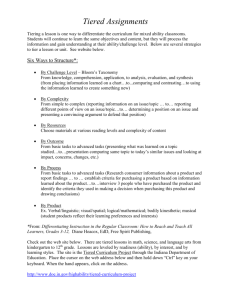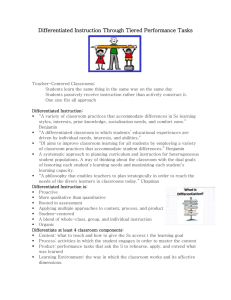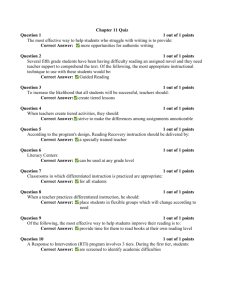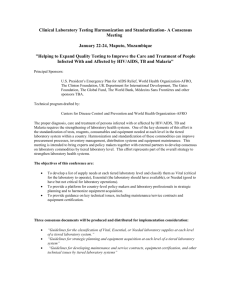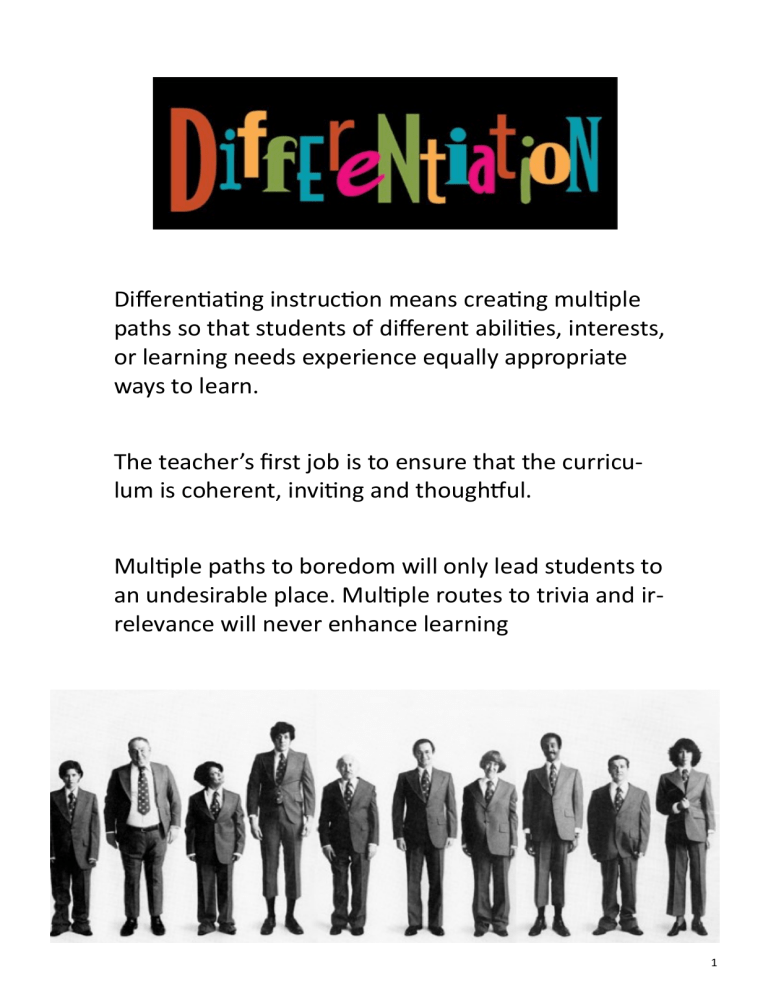
Differentiating instruction means creating multiple paths so that students of different abilities, interests, or learning needs experience equally appropriate ways to learn. The teacher’s first job is to ensure that the curriculum is coherent, inviting and thoughtful. Multiple paths to boredom will only lead students to an undesirable place. Multiple routes to trivia and irrelevance will never enhance learning 1 2 3 Ongoing assessment 4 Flexible Grouping This is students working in a variety of groups, based on different elements of their learning. Groups are both homogeneous and heterogeneous. Vary groups frequently so there is no stigma. Mini-lessons A short, specific lesson with a group of students who are ready to learn or practise a skill that is needed by all those in the group. 5 6 7 Offering Choice—Order of tasks 8 Offering Choice—Learning Contracts 9 Open ended and tiered activities An open-ended activity is where all students in the group tackle the same assignment, but the end product will differ for beginner, intermediate, and advanced clusters. It’s a great technique because students will feel comfortable working within their level. A tiered activity is when students are doing the same activity, but it’s tiered according to their difficulty level. 10 Tiered Activity—simple The content is the same but the process or the products are varied according to the level of skill or knowledge 11 Tiered Activity—simple 12 Tiered Activity—simple 13 Open ended activity -simple The content is the same but the process or the products are varied according to the level of skill or knowledge 14 Offering choice –RAFT 15 Choice Boards (also called Tic Tac Toe) 16 Choice Boards (also called Tic Tac Toe) 17 Choice Boards (also called Tic Tac Toe) 18 Another example of a simple tiered activity 19 20 21 22 Cubing 23 24 Three Tiered Activities 1. Design the challenge 2. Scaffold the challenge 3. Extend the challenge Teach up, not down! 25 26 27 28 29 Learning Stations Teachers base differentiated stations on student assessment data, whereas a traditional station is based on whole-group instruction. In a differentiated station, students work within multilevel resources, whereas traditional station resources are not differentiated. Differentiated stations have tiered assignments, which include varied student responses, whereas a traditional learning station only has one level of response for all. Differentiated stations have tiered activities, whereas traditional stations do not. 30 More on tiered activities 31 32 33 34 35 36
